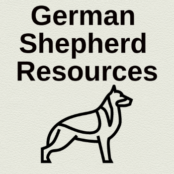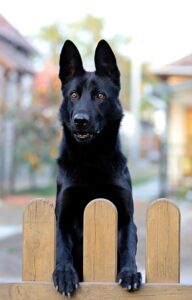Are you struggling to differentiate between a reactive and an aggressive dog? You’re not alone. For many dog owners, animal behaviorists, and pet trainers, understanding these canine behaviors is crucial for ensuring the well-being of both dogs and their human companions. While reactive and aggressive behaviors are often confused, they are distinct and require different approaches for management and treatment. By the end of this guide, you’ll have a comprehensive understanding of these behaviors, their causes, how to manage them, and when it’s time to seek professional help.
Table of Contents
Understanding Reactive Dogs
Definition of Reactivity in Dogs
Reactive dog behavior is a response to specific stimuli that trigger an exaggerated or intense reaction. Unlike aggressive dogs, which may display hostility, reactive dogs are often responding out of fear or anxiety. Understanding this distinction is vital for addressing the root cause of the behavior and implementing effective training techniques.
Common Triggers for Reactive Behavior
Reactive dogs may respond to a variety of triggers, making identification key to managing their behavior. Common triggers include:
- Other Dogs: A common scenario where dogs may react is when they encounter other dogs, whether on walks or at the park.
- Strangers: Some dogs may react to unfamiliar people entering their space, leading to barking or growling.
- Loud Noises: Thunderstorms, fireworks, or even a loud vehicle can set off a reactive dog.
- Sudden Movements: Quick, unexpected movements can startle a reactive dog, leading to an immediate response.
Signs of Reactivity
Recognizing the signs of reactivity can help you intervene before the behavior escalates:
- Barking: A frequent response when a dog feels threatened or uneasy.
- Lunging: A physical manifestation of the dog’s desire to either approach or escape the trigger.
- Growling: An audible warning that the dog is uncomfortable.
- Hair Standing Up: Also known as piloerection, it indicates heightened arousal or alertness.
Underlying Causes of Reactivity
Several factors can contribute to a dog’s reactivity:
- Fear: Often, reactive behavior stems from a fear response to perceived threats.
- Anxiety: Anxiety can make dogs more sensitive to their environment, leading to reactivity.
- Lack of Socialization: Dogs that haven’t been exposed to various stimuli during critical development stages may struggle with reactivity.
- Past Traumatic Experiences: A history of negative experiences can make a dog more prone to reacting defensively.
Characteristics of Aggressive Dogs
Definition of Aggression in Dogs
Aggression in dogs involves hostile or violent behavior towards a person, another animal, or an object. It can be directed and intentional, often requiring a different handling approach compared to reactivity, with the potential for serious consequences if not addressed properly.
Types of Canine Aggression
Understanding the type of aggression is vital for effective intervention:
- Territorial Aggression: Dogs exhibit this behavior when defending their space from perceived intruders.
- Protective Aggression: This occurs when a dog perceives a threat to their family members or pack.
- Fear-Based Aggression: When a dog feels cornered or threatened, it may act aggressively out of fear.
- Dominance Aggression: Some dogs display aggression to assert control or dominance over resources or individuals.
Signs of Aggression
These indicators can help you identify aggressive behavior:
- Intense Growling: More threatening and deeper than typical growls, indicating serious discomfort or anger.
- Showing Teeth: An overt warning sign that the dog is ready to defend its position.
- Snapping or Biting: Physical actions that show the dog is prepared to escalate the situation.
- Rigid Body Posture: A stiff stance that indicates high tension and readiness for confrontation.
Underlying Causes of Aggression
The roots of aggressive behavior can vary:
- Genetics: Some dogs are predisposed to aggression due to their breed or lineage.
- Lack of Proper Training: Dogs without proper guidance might resort to aggression when unsure of how to respond.
- Medical Issues: Health problems can lead to irritability or pain-induced aggression.
- Resource Guarding: Dogs that feel their food, toys, or territory are threatened may become aggressive.
Key Differences Between Reactive and Aggressive Dogs
Intention Behind the Behavior
The primary difference between reactivity and aggression lies in the intention. Reactive dogs typically act out of fear, anxiety or excitement without the intent to harm, whereas aggressive dogs may intend to establish control or dominance. Jasper my GSD was a mixed bag. He was primarily excited by other dogs but that could easily turn into aggression if not handled right. My training goal for Jasper was neutrality. Some dogs are actually aggressive and start with the intent to harm not simple excitement.
Intensity and Duration of the Response
Reactive behaviors tend to be short-lived episodes triggered by immediate stimuli. In contrast, aggressive behaviors can sustain over longer periods, especially if not interrupted or redirected.
Likelihood of Escalation to Physical Confrontation
Reactivity is less likely to escalate to physical confrontation unless the dog feels trapped or extremely threatened. Aggression, however, carries a higher risk of resulting in physical confrontation if not managed carefully. Reactivity can easily turn into aggression if you can’t break the dog out of his reactive state of mind.
Ability to Redirect or Interrupt the Behavior
Reactive behaviors can often be redirected with the right techniques, helping the dog focus on something positive instead. Aggressive behaviors may require more intensive interventions, potentially involving professional help to ensure safety.
Management and Training Strategies for Reactive Dogs
Importance of Early Intervention
Addressing reactive behaviors early can prevent them from becoming ingrained and more challenging to manage. Early intervention can help desensitize dogs to their triggers and reduce anxiety over time. Jasper, my GSD’s main trigger was other dogs. He literally could pull me off my feet if he saw another dog.
Desensitization and Counter-Conditioning Techniques
These techniques involve gradually exposing the dog to the trigger at a comfortable distance, pairing it with positive reinforcement to change the dog’s emotional response. I had some success doing this, in that Jasper’s tolerance circle got smaller. Where he might react to a dog 30 yards away he improved to maybe 30 feet.
Creating Positive Associations with Triggers
By rewarding calm behavior in the presence of a trigger, dogs can learn to associate previously frightening stimuli with positive outcomes, reducing their reactivity. There is some validity to these methods and they may be all that’s needed with certain types of dogs, but my GSD was not one of them. He needed more.
Teaching Alternative Behaviors
Training the dog to perform alternative behaviors, such as sitting quietly or making eye contact, can help redirect their energy away from the trigger and promote calmness.
Use of Management Tools
Tools such as head halters and front-clip harnesses can provide better control over reactive dogs during walks or in situations where triggers are present, enabling a safer and more manageable experience. The gentle leader collar was very helpful in some situations.
Addressing Aggression in Dogs
Importance of Professional Assessment
Given the potential risks associated with aggression, seeking a professional assessment is crucial. Experts can evaluate the behavior and recommend an appropriate treatment plan.
Safety Measures and Management Techniques
Ensuring safety through the use of muzzles, barriers, or controlled environments can help manage aggressive behavior while working on behavior modification.
Behavior Modification Programs
Comprehensive programs focus on changing the dog’s response to triggers through consistent training and reinforcement, often requiring professional guidance.
Potential Use of Medication in Conjunction with Training
In some cases, medication prescribed by a veterinarian can aid in managing aggression, especially if it’s linked to anxiety or other medical issues, though it should always be coupled with behavior modification efforts. There can be genetically driven issue that won’t be fixed with just training. In these cases medication is a valid choice.
Importance of Consistency and Patience in Treatment
Effective treatment requires time, patience, and consistent application of techniques. Dog owners must be committed to the process for successful outcomes.
Preventing Reactivity and Aggression
Proper Socialization During Puppyhood
Exposing puppies to a variety of people, animals, environments, and experiences can help build confidence and reduce the likelihood of future reactivity or aggression.
Positive Reinforcement Training Methods
Utilizing reward-based training can promote desirable behaviors while strengthening the bond between the dog and its owner, reducing the need for more severe behavioral responses. However, they may not always be enough. A reactive dog is literally out of his mind. In my opinion and experience so far it took more than praise or a cookie, though certainly I use both praise and cookies in my training.
Regular Exercise and Mental Stimulation
Providing dogs with sufficient physical activity and mental challenges can help alleviate excess energy and frustration, contributing to more balanced behavior.
Building a Strong Bond Between Dog and Owner
A strong, trusting relationship between a dog and its owner can enhance communication and understanding, making it easier to manage and prevent unwanted behaviors. What I found with my GSD, Jasper, was once he understood I was in control and did not need his protection and instead would protect him, he calmed down. This took professional help and lots of work on my part.
When to Seek Professional Help
Signs That Indicate the Need for a Professional
If aggression or reactivity persists despite efforts, or if it poses a risk to others, it’s time to consult a professional for guidance and support. Don’t feel bad about needing help but do your due diligence. Not all trainers are equipped to deal with a reactive/aggressive dog.
Types of Professionals to Consult
Certified behaviorists, veterinary behaviorists, and experienced trainers with expertise in canine behavior can provide tailored advice and intervention plans.
What to Expect During a Professional Assessment
Professionals will evaluate the dog’s history, triggers, and current behavior to develop a comprehensive plan that addresses both the dog’s needs and the owner’s goals. In Jasper’s case my breeder referred me to a trainer and we did a 3 week board and train. An e-collar was part of the training.
It’s the best thing I could have done in my opinion and in no way do I consider it cruel. Cruel is not being committed enough to provide a dog with needed leadership and boundaries. The stimulation is on par with a TENs unit on low levels(I checked it on myself) and Jasper only needed once or twice on a higher level. We are able to go anywhere now and it generally only takes a tone from the collar to bring his attention back to me. When I walk Jasper I carry a big stick. My deal with him is you don’t need to defend me, I will defend you if a loose dog comes up and that’s just what I do!
Conclusion
Understanding the differences between reactive vs. aggressive dogs is essential for effective management and intervention. By recognizing these distinctions, dog owners and professionals can implement appropriate strategies to address unwanted behaviors. Whether you’re dealing with a reactive or aggressive dog, proper diagnosis and treatment are key to enhancing the dog’s quality of life and promoting harmonious coexistence. For those seeking further education and support, numerous resources and expert consultations are available.
Additional Resources
- Recommended books on dog behavior, such as “The Other End of the Leash” by Patricia McConnell and “Don’t Shoot the Dog” by Karen Pryor.
- Online courses and webinars from reputable sources like the International Association of Animal Behavior Consultants (IAABC).
- Local training and support groups for reactive/aggressive dog owners, providing community and shared experiences.

